What is Corona ransomware?
Corona is the title of a malicious program, belonging to the Hakbit ransomware family. Its discovery is credited to dnwls0719. Following infection, the device’s data is encrypted and users’ receive ransom demands for the decryption. Typically, ransomware renames the affected files during the encryption process, however filenames of files compromised by Corona malware – remain unchanged. Once the encryption is finished, a ransom note – “HELP_ME_RECOVER_MY_FILES.txt” is dropped onto the desktop. 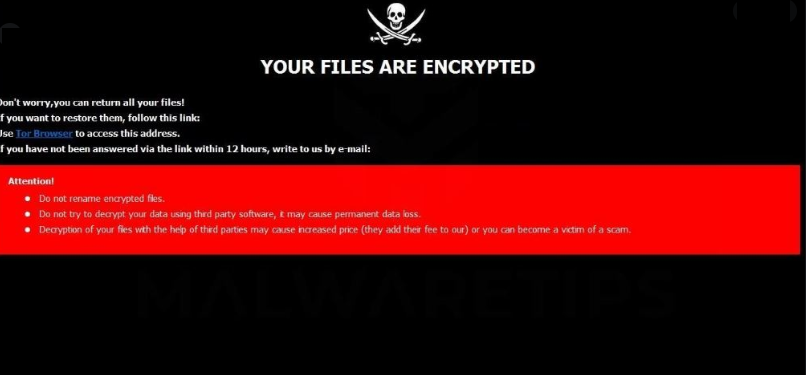
The ransomware known as Corona ransomware is categorized as a severe threat, due to the possible damage it might cause. You You likely never encountered it before, and it might be especially surprising to find out what it does. You’ll not be able to open your files if ransomware has locked them, for which powerful encryption algorithms are used. The reason this malicious program is categorized as high-level is because ransomware locked files are not always possible to decode. Crooks will give you the option to decrypt files by paying the ransom, but that isn’t the encouraged option. File decryption even if you pay isn’t guaranteed so you may just be spending your money for nothing. Consider what is there to prevent cyber crooks from just taking your money. Moreover, the money you provide would go towards financing more future ransomware and malware. Ransomware already costs billions to businesses, do you really want to be supporting that. Crooks are lured in by easy money, and when people pay the ransom, they make the ransomware industry attractive to those kinds of people. Buying backup with the requested money would be a much better choice because if you are ever put in this type of situation again, you file loss wouldn’t worry you because you can just recover them from backup. You can then just terminate Corona ransomware and recover data. And if you are confused about how the data encoding malicious program managed to contaminate your device, we will explain its distribution ways in the following paragraph.
Corona Virus Used In Ransomware
Text presented in Corona ransomware’s text file (“HELP_ME_RECOVER_MY_FILES.txt”):
1 – What Happened to My Computer ?
Your business is at serious risk.
There is a significant hole in the security system of your company.
We’ve easily penetrated your network and now all your files, documents, photos, databases, …are safely
encrypted with the strongest millitary algorithms RSA4096 and AES-256.No one can help you to restore files without our special decoder (corona decryption).
We have also uploaded a lot of files from your network on our secure server, so if you refuse to pay the ransom,
those files will be published or solded to competitors2 – Can I Recover My Files ?
Sure, we guarantee that you can recover all your files safely.
If you want to restore your files write to recoba90@protonmail.com and attach 2 encrypted files (Less than 3MB each) and we will decrypt them.
Please don’t forget to precise the name of your compagny and your unique identifier key in the e-mail.
But if you want to decrypt all your files, you need to pay.
You only have 5 days from this moment to submit the payment. After that all your files will be lost definitely.
3 – How Do I Pay ?
Payment is accepted in bitcoin only. You can buy bitcoins from :
-hxxps://www.coinbase.com
-hxxps://localbitcoins.comThe final price of decryption is 300$ .
First : Send 300$ worth of bitcoin
Second: send an e-mail to recoba90@protonmail.com and don’t forget to precise the name of you compagny, your wallet ID and your
unique identifier key.After that, we will send you our corona decryption tool to restore all your files.!!!!Be warned, we won’t be able to recover your files if your start fiddling with them.!!!!
Corona ransomware
No System Is SafeBitcoin wallet to make the transfer to is:
32bzWrWXXbWGSwB4gGTQt8RdzuNQVaS9Md
Unique Identifier Key (must be sent to us together with proof of payment):
————
–
————
How Corona spread
You may commonly see data encrypting malicious software attached to emails or on dubious download websites. Seeing as these methods are still rather popular, that means that people are pretty careless when they use email and download files. That isn’t to say more sophisticated methods aren’t popular, however. Cyber crooks do not have to put in much effort, just write a simple email that seems quite credible, attach the infected file to the email and send it to potential victims, who may think the sender is someone trustworthy. Money related problems are a frequent topic in those emails because users take them more seriously and are more likely to engage in. Criminals also frequently pretend to be from Amazon, and tell possible victims that there has been some strange activity in their account, which ought to immediately encourage a person to open the attachment. There a couple of things you ought to take into account when opening files added to emails if you wish to keep your system secure. Above all, see if you know the sender before opening the attachment they’ve sent, and if they aren’t known to you, look into them carefully. You will still need to investigate the email address, even if you know the sender. Be on the lookout for obvious grammar mistakes, they’re usually glaring. Another typical characteristic is the lack of your name in the greeting, if a real company/sender were to email you, they would definitely know your name and use it instead of a general greeting, like Customer or Member. file encoding malware may also use not updated programs on your system to enter. All software have weak spots but when they are discovered, they’re usually fixed by software makes so that malware cannot use it to enter a device. However, judging by the amount of computers infected by WannaCry, obviously not everyone rushes to install those updates. It’s crucial that you frequently update your programs because if a vulnerability is serious enough, Serious weak spots may be used by malicious software so make sure you update all your software. Patches can install automatically, if you find those notifications bothersome.
What can you do about your locked data by Corona ransomware
Ransomware only targets certain files, and when they are located, they will be locked. If by chance you have not noticed anything strange until now, when you’re cannot access files, it will become obvious that something has occurred. A weird extension will also be attached to all files, which can help identify the file encrypting malware. Powerful encryption algorithms might have been used to encrypt your data, and there’s a likelihood that they might be permanently locked. After the encryption process is completed, you’ll find a ransom notification, which should make clear, to some extent, what has happened and how you ought to proceed. You will be proposed a decryptor, for a price obviously, and cyber crooks will allege that using other data recovery options may harm them. Ransom sums are generally specified in the note, but in some cases, crooks ask victims to send them an email to set the price, so what you pay depends on how valuable your files are. For the reasons already discussed, paying the criminals is not a suggested option. Paying should be a last resort. Maybe you have made backup but simply forgotten about it. You might also be able to discover a free decryptor. We should say that every now and then malicious software researchers are able to crack the data encrypting malicious software, which means you may restore data for free. Before you decide to pay, consider that option. Using part of that money to buy some kind of backup may do more good. If backup is available, you could restore data after you delete Corona ransomware virus fully. Now that you how how much damage this kind of threat may cause, do your best to avoid it. Stick to legitimate download sources, pay attention to what kind of email attachments you open, and make sure programs are updated.
Corona ransomware removal
an anti-malware utility will be necessary if you wish the data encoding malware to be gone completely. If you have little knowledge when it comes to computers, unintentional damage might be caused to your computer when attempting to fix Corona ransomware virus manually. In order to avoid causing more trouble, go with the automatic method, aka an anti-malware program. This program is handy to have on the computer because it will not only make sure to fix Corona ransomware but also prevent one from entering in the future. So research what matches what you need, install it, scan the device and if the threat is located, eliminate it. However, the program isn’t capable of restoring data, so do not expect your data to be recovered after the infection is gone. After you get rid of the data encrypting malicious software, ensure you routinely make copies of all your data.
Offers
Download Removal Toolto scan for Corona ransomwareUse our recommended removal tool to scan for Corona ransomware. Trial version of provides detection of computer threats like Corona ransomware and assists in its removal for FREE. You can delete detected registry entries, files and processes yourself or purchase a full version.
More information about SpyWarrior and Uninstall Instructions. Please review SpyWarrior EULA and Privacy Policy. SpyWarrior scanner is free. If it detects a malware, purchase its full version to remove it.

WiperSoft Review Details WiperSoft (www.wipersoft.com) is a security tool that provides real-time security from potential threats. Nowadays, many users tend to download free software from the Intern ...
Download|more


Is MacKeeper a virus? MacKeeper is not a virus, nor is it a scam. While there are various opinions about the program on the Internet, a lot of the people who so notoriously hate the program have neve ...
Download|more


While the creators of MalwareBytes anti-malware have not been in this business for long time, they make up for it with their enthusiastic approach. Statistic from such websites like CNET shows that th ...
Download|more
Quick Menu
Step 1. Delete Corona ransomware using Safe Mode with Networking.
Remove Corona ransomware from Windows 7/Windows Vista/Windows XP
- Click on Start and select Shutdown.
- Choose Restart and click OK.

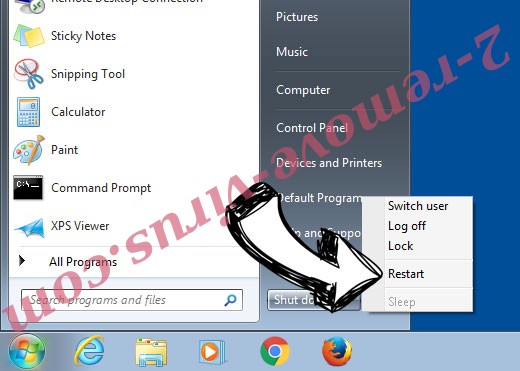
- Start tapping F8 when your PC starts loading.
- Under Advanced Boot Options, choose Safe Mode with Networking.

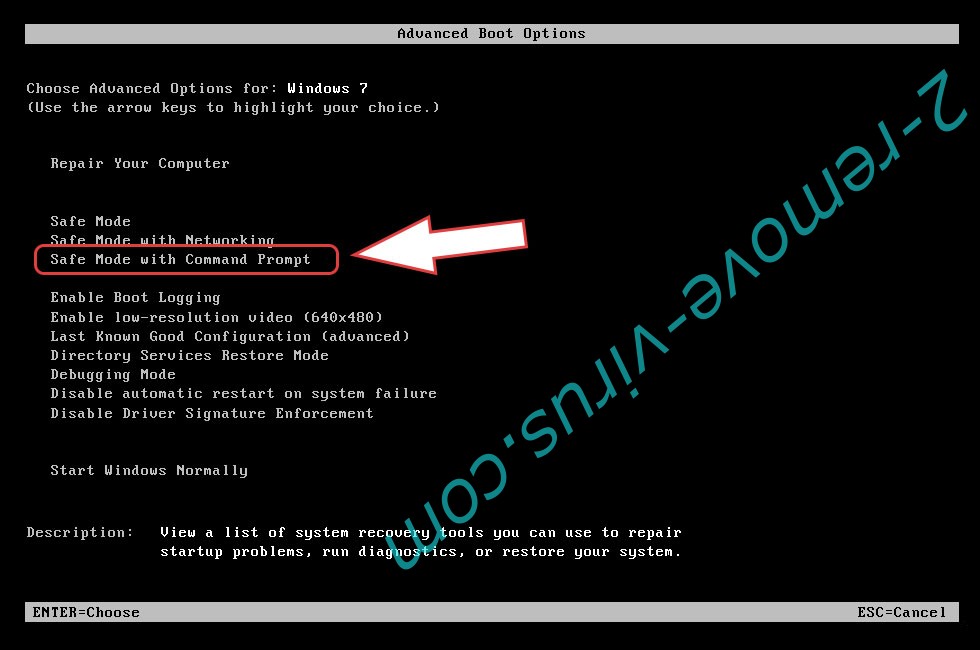
- Open your browser and download the anti-malware utility.
- Use the utility to remove Corona ransomware
Remove Corona ransomware from Windows 8/Windows 10
- On the Windows login screen, press the Power button.
- Tap and hold Shift and select Restart.

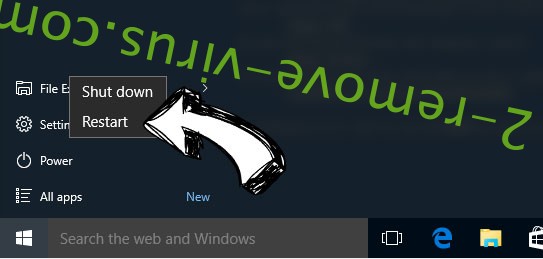
- Go to Troubleshoot → Advanced options → Start Settings.
- Choose Enable Safe Mode or Safe Mode with Networking under Startup Settings.

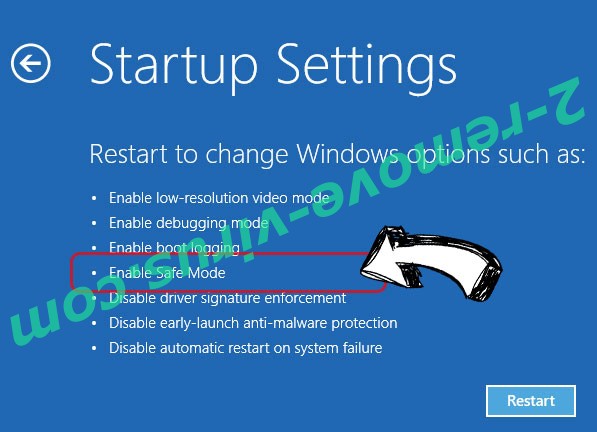
- Click Restart.
- Open your web browser and download the malware remover.
- Use the software to delete Corona ransomware
Step 2. Restore Your Files using System Restore
Delete Corona ransomware from Windows 7/Windows Vista/Windows XP
- Click Start and choose Shutdown.
- Select Restart and OK


- When your PC starts loading, press F8 repeatedly to open Advanced Boot Options
- Choose Command Prompt from the list.

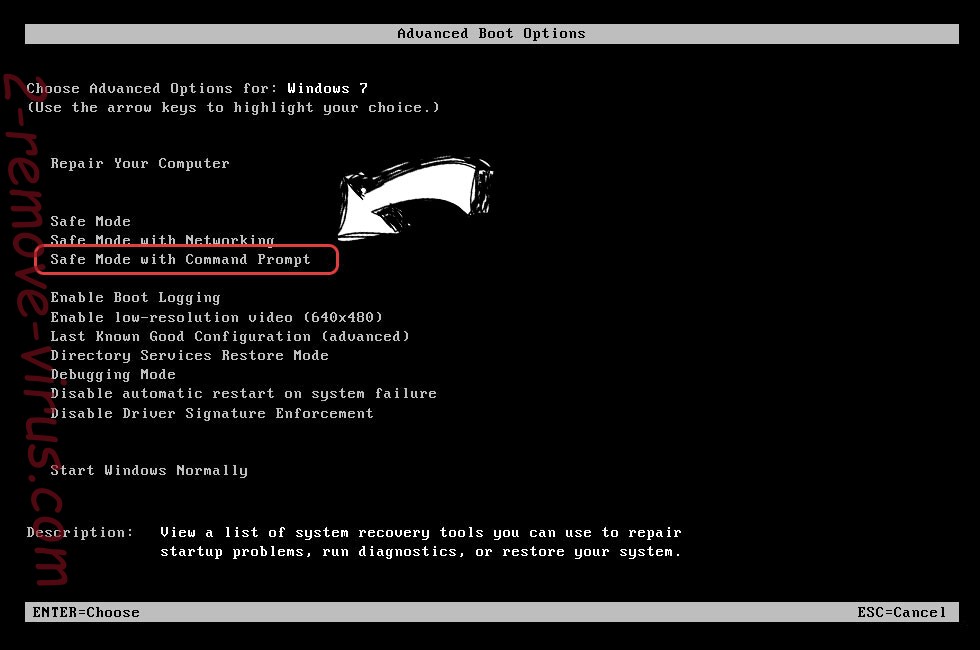
- Type in cd restore and tap Enter.

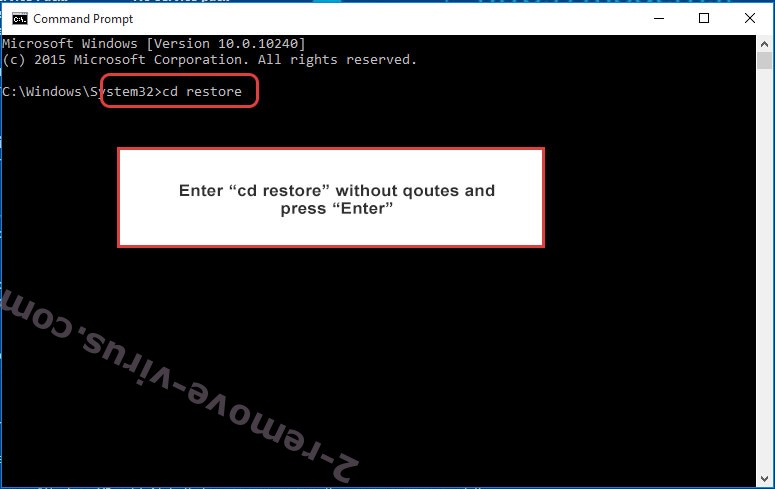
- Type in rstrui.exe and press Enter.

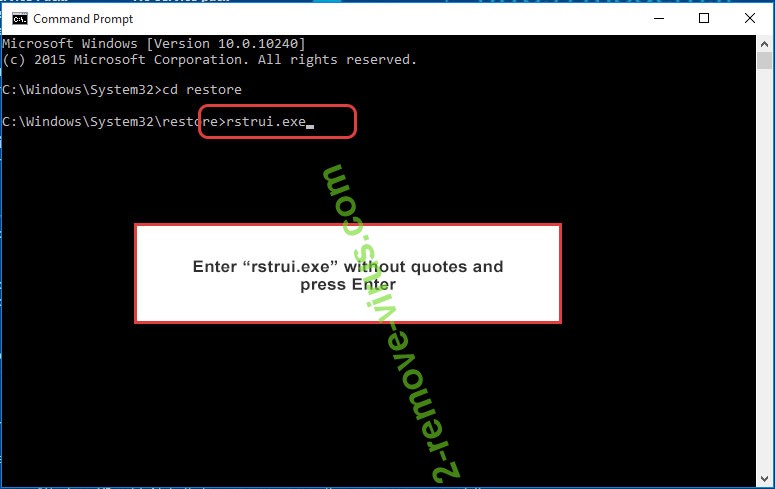
- Click Next in the new window and select the restore point prior to the infection.

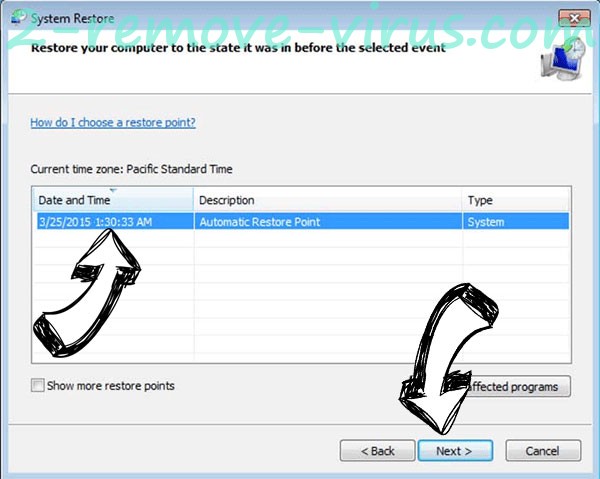
- Click Next again and click Yes to begin the system restore.

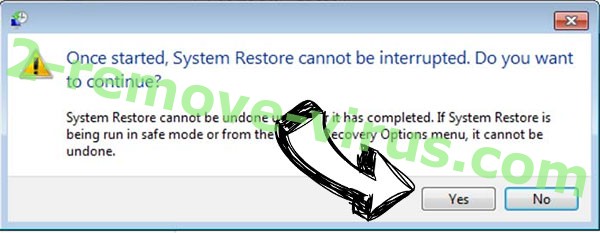
Delete Corona ransomware from Windows 8/Windows 10
- Click the Power button on the Windows login screen.
- Press and hold Shift and click Restart.


- Choose Troubleshoot and go to Advanced options.
- Select Command Prompt and click Restart.

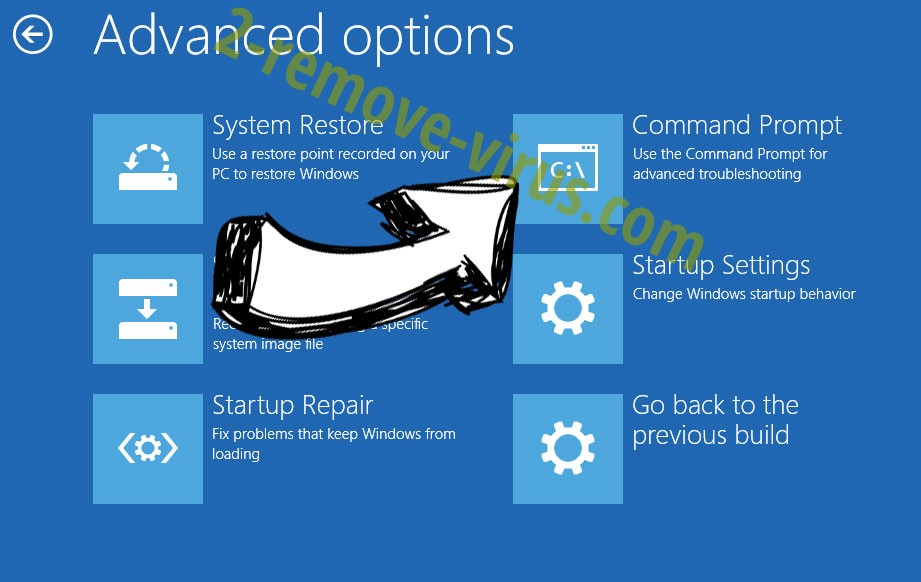
- In Command Prompt, input cd restore and tap Enter.


- Type in rstrui.exe and tap Enter again.


- Click Next in the new System Restore window.

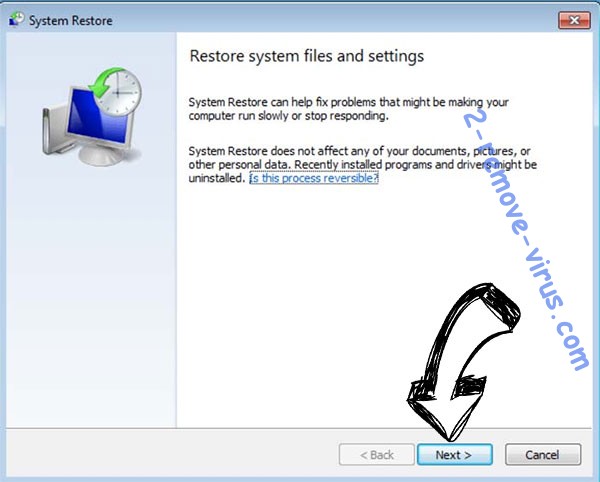
- Choose the restore point prior to the infection.


- Click Next and then click Yes to restore your system.


Site Disclaimer
2-remove-virus.com is not sponsored, owned, affiliated, or linked to malware developers or distributors that are referenced in this article. The article does not promote or endorse any type of malware. We aim at providing useful information that will help computer users to detect and eliminate the unwanted malicious programs from their computers. This can be done manually by following the instructions presented in the article or automatically by implementing the suggested anti-malware tools.
The article is only meant to be used for educational purposes. If you follow the instructions given in the article, you agree to be contracted by the disclaimer. We do not guarantee that the artcile will present you with a solution that removes the malign threats completely. Malware changes constantly, which is why, in some cases, it may be difficult to clean the computer fully by using only the manual removal instructions.
